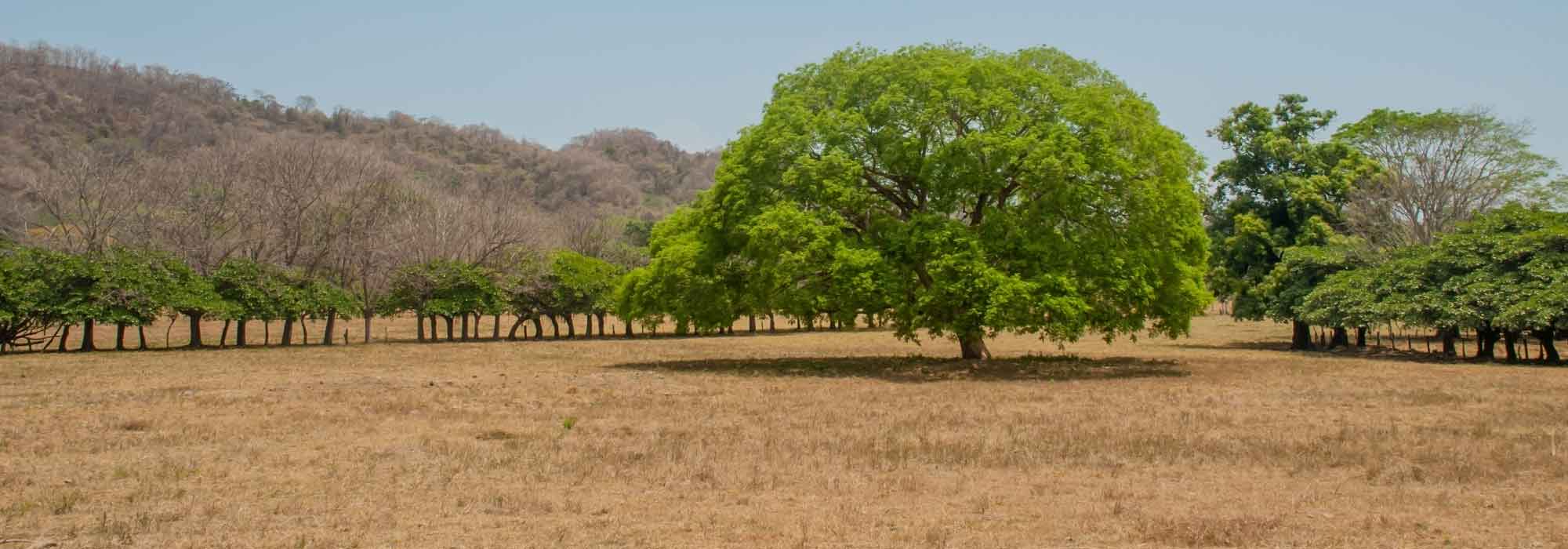
Drought-resistant trees
A selection of trees for small and large gardens, perfectly suited to dry soils
Contents
It is clear that the climate is changing and that heatwaves and droughts are becoming more frequent, regardless of the regions. We are therefore urged to green our spaces and plant trees, those natural air conditioners that provide us with much-needed shade, help us breathe, and offer shelter and food to a whole biodiversity. The question that gardeners in drought-prone areas inevitably ask is: “which tree is the most resilient? Which tree can withstand heat and resist drought? But at the same time, “which tree will be the most suitable for my garden?” We invite you to follow us step by step through 4 gardens, 4 spaces of different sizes and configurations, to discover which ones you can choose from our collection and plant for your greatest joy, that of future generations, and especially without automatic watering!
Small tree for small garden
We are here in a sunny garden. Imagine a small urban or village enclosure that its owners are very proud of, or a small plot in a housing estate that requires little maintenance but allows children to play outside and entertain friends. Even if small, this piece of nature, with its rather stony and poor soil, needs a bit of volume, verticality, and shade. And if the trees considered can help to isolate from the neighbours, that’s even better. But which subject to choose in such dry ground?
- The Silk tree – Albizia julibrissin
There are multiple varieties of this small-growing tree, which depending on your choice will reach between 5 and 6 m in height with a spread of 4 to 5 m. The most common are the varieties ‘Ombrella’ and ‘Rosea’, but all Albizias are small trees with a feathery appearance and spreading, parasol-like branches. Their foliage – purple for the variety ‘Summer Chocolate’ and ‘Evey’s Pride’ – is deciduous and folds up at night. The large compound leaves are very light, and the branches bear a long summer flowering of pretty pink to red feathery blooms. Despite their somewhat exotic appearance, they are hardy trees that enjoy sun, well-drained soils, and especially drought!

Albizia julibrissin ‘Rosea’, in a small space near the house, detail of the branches and detail of the flowers
- The Olive tree – Olea europaea
An essential for dry gardens, typical of southern landscapes but adaptable to many regions. The olive tree prefers deep, well-drained, and dry soil. It can reach a height of 5 to 10 m, but its growth is slow, and it responds well to pruning, allowing it to be managed in small spaces. The variety ‘Cipressino’ is particularly interesting for its compact and upright habit. Ideal if space is really limited in width.

Olea europaea, planted in a structured garden, in a small bed Olea europaea ‘Cipressino’ with a vertical habit.
- The Paper mulberry – Broussonetia Papyrifera
Perfect for those seeking dense shade with a modest-sized tree, reaching a height of 8 m with a spread of 6 m. Its large, lobed leaves are characteristic and a beautiful bright green, especially for the variety ‘Golden Shadow’, which brightens the garden with a lovely golden yellow. It grows quite quickly and tolerates all types of soil, even very calcareous or sandy. Drought does not faze it, and it can be planted in full sun or partial shade. For the record, its bark has been used in Asia for centuries to make calligraphy paper.

Broussonetia Papyrifera, silhouette and detail of the foliage
Read also
How to prune a tree?For a garden of a few hundred square metres
This garden is a bit larger, enough to accommodate a lovely terrace, some flower beds, and perhaps even a pool area. However, if you observe it with a critical eye, you will quickly find numerous opportunities to welcome one or more trees to enhance the decor. The soil is dry and stony, the sun beats down hard, and there are a few beautiful specimens missing, easy to grow and especially not water-hungry, this precious resource that we save for the small vegetable garden. Here is the ideal selection for this type of garden:
- The Hop hornbeam – Ostrya carpinifolia
Its common name comes from both the shape of its leaves, which resemble those of the Hornbeam, and the appearance of its fruits, which are similar to those of the Hop. It is a medium-growing tree, reaching between 10 and 15 m in height with a spread of about 5 m. Being quite drought-resistant, it can be found in a large part of the Mediterranean basin. It naturally takes on a conical habit. Its foliage is deciduous, turning from light green to golden yellow in autumn. Perfectly hardy, it prefers well-drained soil, even poor, dry, and calcareous.

Ostrya carpinifolia, silhouette, autumn foliage and detail of the fruits
- Judas tree – Cercis siliquastrum
Legend has it that Judas hanged himself from this tree after betraying Jesus. In any case, this tree is one of the most beautiful flowering specimens, as it is covered in bright pink flowers in March-April. Its multitude of flowers appears before the leaves and attracts pollinating insects. At maturity, it reaches about ten metres with a spread of around 4 m. Its heart-shaped deciduous leaves are a lovely light green. It withstands temperatures of around -10°C and prefers well-drained soil where it will resist drought once established. It enjoys full sun or partial shade.

Cercis siliquastrum, silhouette and detail of the leaves and flowers.
- Pepper tree – Schinus molle
A beautiful tree, native to South America, very interesting for its rapid growth of about 1 m per year, reaching around ten metres in height, and its evergreen foliage. It naturally adopts a weeping habit, and its aromatic foliage releases a sweet peppery scent when crushed. In spring, its discreet flowering takes the form of small pale yellow flowers grouped in clusters. These are followed by edible pink berries with a peppery taste. It is an impressive tree but a bit tender, best reserved for regions with a mild climate as it suffers from temperatures below -5°C. It tolerates poor, dry soils, preferably well-drained.

Schinus molle, silhouette and detail of the edible pink berries
- Persian lilac – Melia azedarach
A tree native to Asia, the Melia is interesting for its highly ornamental appearance throughout the year. In spring and early summer, its magnificent fragrant lilac to dark violet flowers attract bees, and it boasts a beautiful dense, glossy green foliage. Deciduous, its leaves turn golden yellow in autumn, when clusters of small spherical berries appear. They change from cream to yellow and remain on the tree throughout winter until the following spring. In suitable climates, it will reach heights of 8 to 12 m. It prefers well-drained soils, even poor ones, is hardy down to -12°C, and is perfectly adapted to drought.
 Melia azedarach, silhouette, detail of the flowers and berries
Melia azedarach, silhouette, detail of the flowers and berries
Discover other Trees and large shrubs
View all →Available in 0 sizes
Available in 1 sizes
Available in 1 sizes
Available in 1 sizes
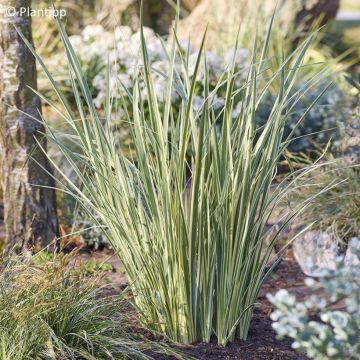
Available in 1 sizes
Available in 1 sizes
Available in 1 sizes
Available in 1 sizes
Available in 2 sizes
Available in 1 sizes
For a large garden of over 800 square metres
Here the scale changes. The garden is spacious and deserves larger specimens, preferably to be isolated to create a majestic effect or to shade a part of the areas that are decidedly too hot in summer.
- The Black Mulberry and the White mulberry – Morus nigra and Morus alba ‘Giant Fruit’
Once cultivated for their edible fruits, mulberries are also interesting for their foliage and broad silhouette. Both will reach between 10 and 15 m in height, with a spread of about 8 m, and their deciduous foliage is quite dense, making them perfect for shading. Nowadays overlooked, their fruits are delicious, and if the gardener forgets them, they will certainly bring joy to the birds! Perfectly hardy, they also tolerate drought very well and thrive in all types of soil.

Morus nigra: silhouette and detail of the fruits of Morus alba
- The Holm oak – Quercus ilex
Among the allies of the dry garden, this oak once covered most of the Mediterranean lands. It is an evergreen tree, reaching 15 to 20 m in height, with a rather slow growth rate. Its small, leathery leaves are glossy green on top and greyish underneath. This oak is very accommodating, thriving in both dry conditions and coastal areas. Its acorns are appreciated by squirrels and wild boars. It prefers dry, well-drained soils and thrives in limestone.

Quercus ilex, silhouette and detail of the fruits and foliage
Read also
7 drought-resistant climbing plantsFor a vast green space... not so green!
Here, we can forget about the lush green lawn reminiscent of a golf course. It has given way to the meadow-lawn, which is much richer in biodiversity and far easier to maintain, although it dries out in summer. We can allow the grass and wildflowers to grow, just mowing a few winding paths, and plant majestic trees. In this large space, we can accommodate giants, those that, at maturity or around 20 years old, reach heights that make you look up, over 20 metres tall.
A planting in a basin in autumn in a well-prepared deep hole, with gravel drainage if the soil is too clayey, and watering once every 10 days during the first summer to encourage deep rooting. Nature will take care of the rest…
- The stone pine – Pinus pinea
For many, the atmosphere of dry gardens is primarily about pines. Among these large-growing conifer species, the umbrella pine is one of the most majestic. When young, its crown has a rounded shape, and as it ages, it adopts its spreading umbrella-like appearance. These pines, often seen grouped in pine forests in the landscapes of the South, can also be planted individually in the garden or in groups if space allows, as it will spread 10 to 15 m, reaching a height of 15 to 20 m! It is perfectly hardy, adapted to salt spray, wind, and drought.

Pinus pinea, silhouette and detail
- The Cedar of Lebanon – Cedrus libani
A magnificent conifer that, as its name suggests, originates from Lebanon, where it is a national emblem. In France, there are many remarkable Cedars of Lebanon, as it is hardy and not very demanding regarding soil type, provided it is deep and well-drained. Its initially conical shape spreads with age, and its evergreen bluish-green foliage is grouped in clusters of needles. It prefers full sun and withstands drought well once established. It needs adequate space, as with an average height of 25 to 30 m, it will spread over 15 m.

Cedrus libani, silhouette and detail
- Subscribe!
- Contents
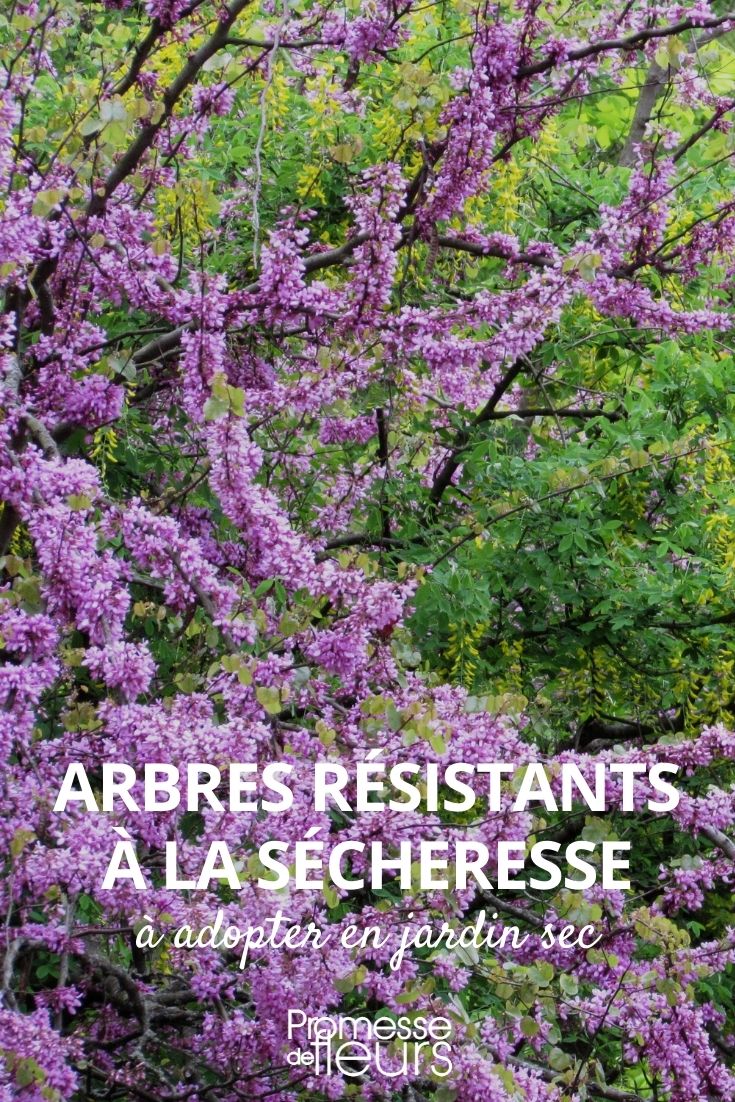































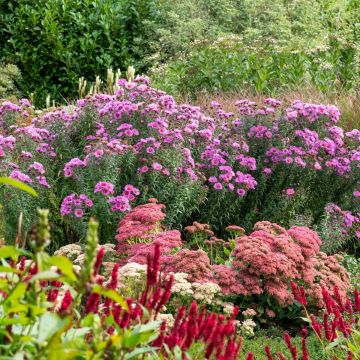
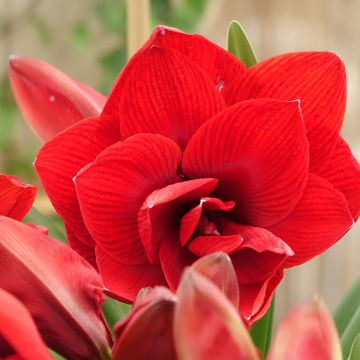


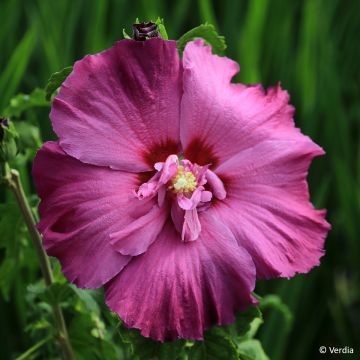
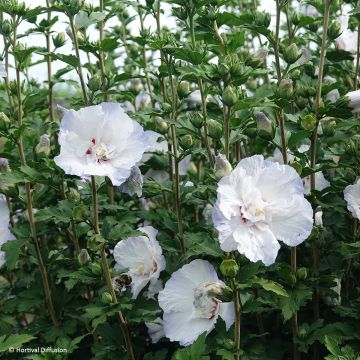
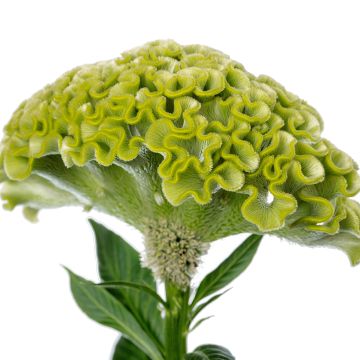
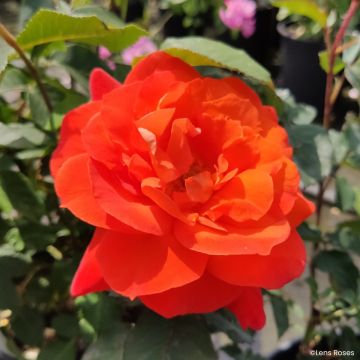
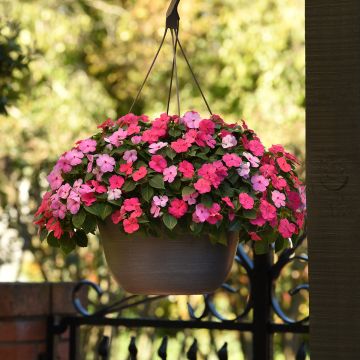
Comments